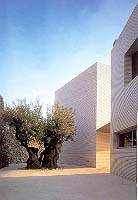
Felipe's house, Oropesa
Carlos Ferrater Lambarri
Carlos Martín González
Carlos Escura Brau
Jaime Sanahuja Rochera
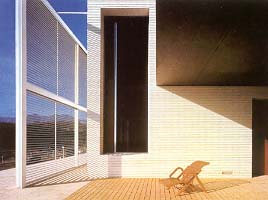
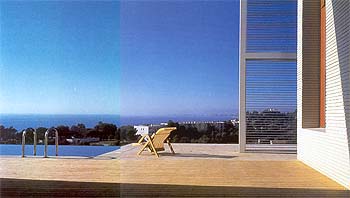
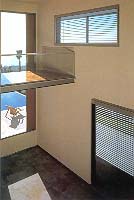
 |
Casa
Felipe, Oropesa Felipe's house, Oropesa |
Arquitectos/Architects: Carlos Ferrater Lambarri Carlos Martín González Carlos Escura Brau Jaime Sanahuja Rochera |
 |
 |
 |
|
La casa se sitúa en una nueva urbanización de la costa de Oropesa. La parcela, de forma regular, tiene un fuerte desnivel y una orientación casi a Oeste, muy desfavorable en verano, que condicionó muchas decisiones. El proyecto se concibió considerando toda la parcela, las luces, el sol y los paisajes exteriores. En una cultura mediterránea, en la que la vida al exterior nos resulta tan amable, establecer los limites del edificio mas allá de sus paredes, mediante la integración, como objeto de proyecto, del paisaje, ya sea natural o creado, nos interesa vivamente. Modificando la pendiente del terreno, se utilizó un estrato intermedio para apoyar la casa, creando un patio trasero encerrado por el muro de contención, realizado en mampostería, y la propia edificación. Este patio, resguardado de vientos y del sol de poniente, sirve de conexión a todos los elementos del conjunto. Es el núcleo del proyecto. Un olivo centenario, símbolo mediterráneo, nos acerca a la tierra. El bloque destinado a dormitorio de los hijos, se separa del principal, constituyendo un sistema autónomo. La fractura entre los bloques permite asomar el patio trasero al mar, enmarcado entre la ligera losa de la visera y las aristas de los dos bloques, proporcionando una vista parcial del mar, limitada, que pone el énfasis en lo concreto, sugiriendo mas que enseñando. Este recurso es constante. Desde cualquier punto, tanto interior como exterior, se ha procurado que tengamos una vista sugerente, controlada, envolvente, buscando constantemente la ambigüedad entre interior y exterior. En todo este proceso, las formas van perdiendo interés, el énfasis se pone en las superficies planas mas que en las masas, la arquitectura comienza a surgir del vacío, de la voluntaria abstracción de elementos a favor del espacio y de la luz, valores mucho mas reales y permanentes. El funcionamiento del edificio, dividido en dos bloques, el principal con las estancias básicas y el dormitorio de los padres y el menor, destinado a los hijos, favorece la constante relación interior/exterior. A pesar de ser una vivienda permanente, esta disposición se ha adecuado a las necesidades los propietarios, lo que confirma una vez mas que las formas de vida son mas amplias que los estereotipos habituales. |
The
house is located in a new housing development on the coast at Oropesa. The
plot, which is regular in shape, has a steep gradient and faces almost due
west, a highly unfavourable direction in summer that influenced many of
the decisions.
The project considers the entire plot, the lights, the sun and the surrounding views. In a Mediterranean culture that enjoys living out of doors, we were very interested in extending the limits of the building beyond its walls by integrating the landscape, whether natural or created, as an object within the design. The gradient was modified and the house was placed on an intermediate level. A courtyard was created to the rear, enclosed by the masonry retaining wall and the house itself. This courtyard, protected from the wind and the western sun, connects all the parts. It is the nucleus of the design. A hundred-year-old olive tree, a symbol of the Mediterranean, gives a feeling of closeness to the earth. The children’s bedroom block is separate from the main block and constitutes an autonomous system. The gap between the blocks gives the rear courtyard a view of the sea, framed by the slender slab of the canopy and the edges of the two blocks. It is a partial, limited view which emphasises concretion and suggests rather than shows. This is a constant motif. We have attempted to find an enveloping, controlled, evocative view at every point, interior or exterior, constantly seeking an ambiguity between interior and exterior. During this process the forms lose their interest, emphasis is placed on flat surfaces rather than masses and the architecture begins to emerge from emptiness, from a voluntary abstraction of elements that favours the far more real, permanent values of space and light. The division of the building into two blocks, a main block with the basic rooms and parents’ bedroom and a smaller block for the children, encourages a constant relating of interior/exterior. Despite being a permanent home, this arrangement fits the needs of the owners, which yet again confirms the existence of a greater variety of lifestyles than the habitual stereotypes. |
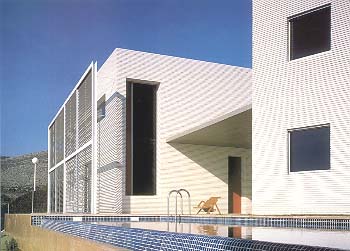
|
Situación/Location: Propietario/ Client: Arquitecto Técnico/Quantity
surveyor: Contratistas/Contractors: Comienzo de obra/Work commenced: 09/06/1997 Fin de obra/Work completed: 18/01/1999 Fotografías/Photography: |
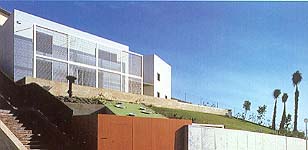 |
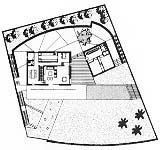 |
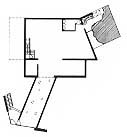 |
 |
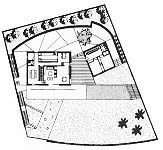 |
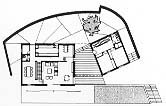 |